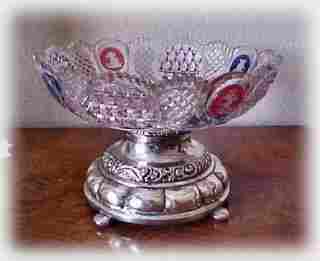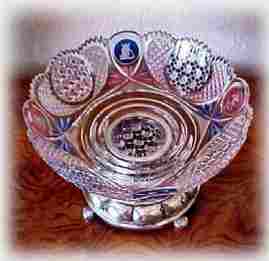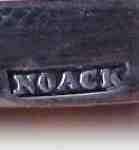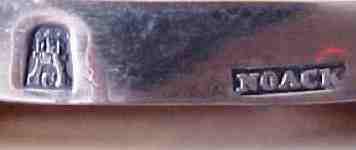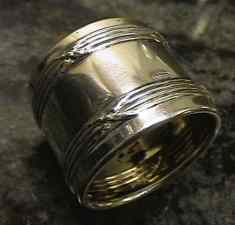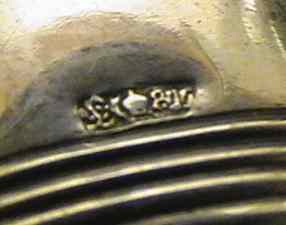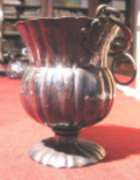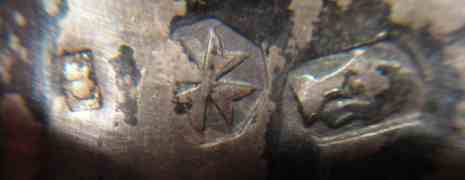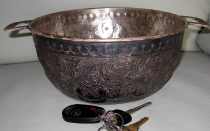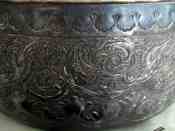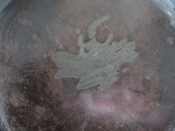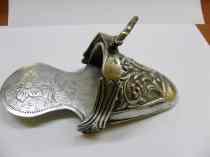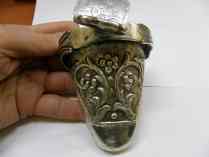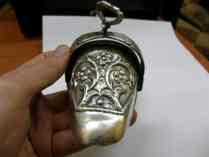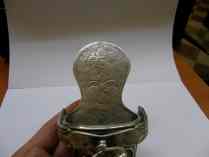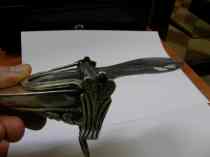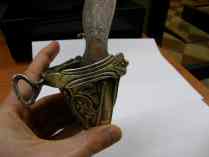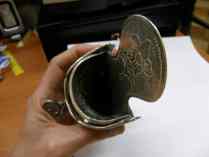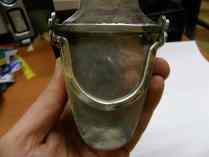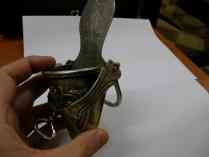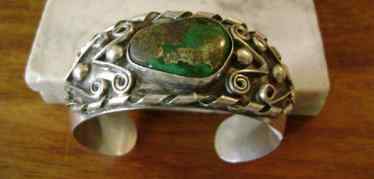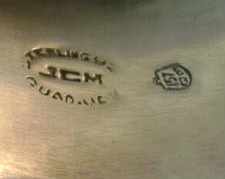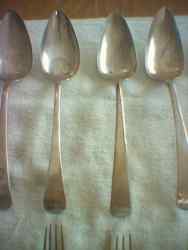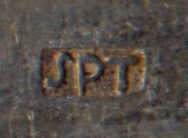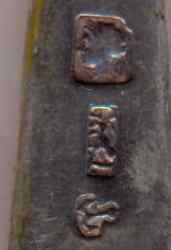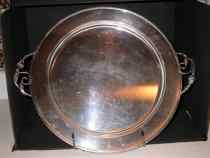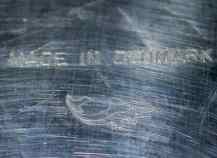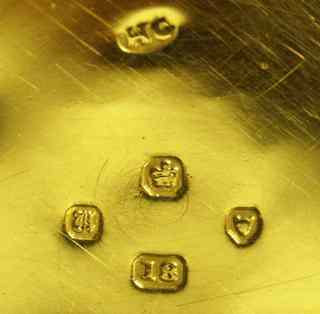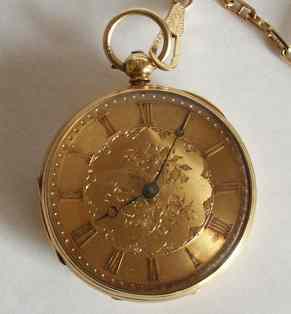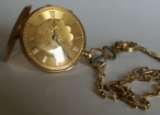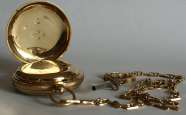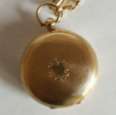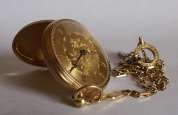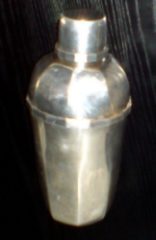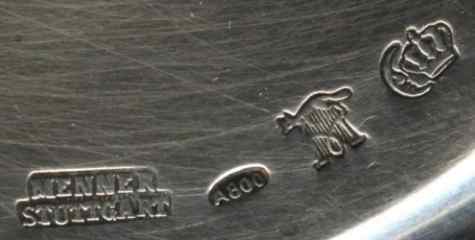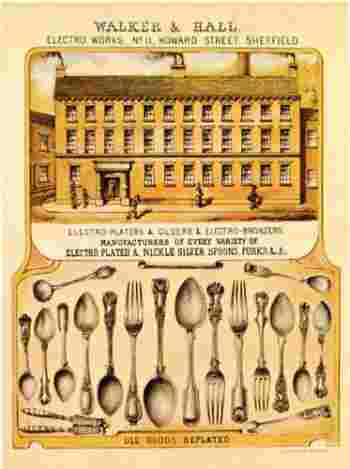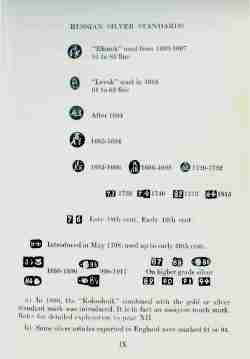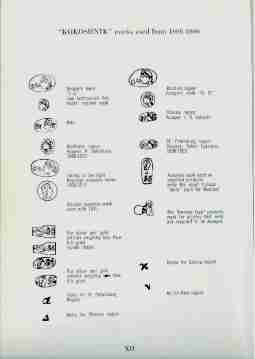 newsletter # 56 - JANUARY 2009
newsletter # 56 - JANUARY 2009www.ASCASonline.org
email: silverassociation@yahoo.it
YOUR GUIDE TO JANUARY NEWSLETTER:
articles new members
members' window
|
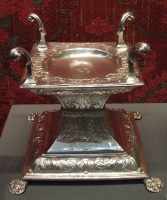
Rod Elser and Jane Carroll present: |
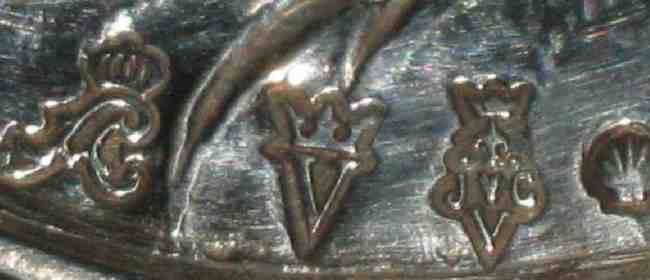
Christophe Ginter presents |
New members
Welcome to new ASCAS members:
Bette G. Bell - USA
Debbie Bonner - USA
Jean Brouns - the Netherlands
M J Coles - England UK
Trevor A. Cozyris - USA
Ken Davies - Canada
John Wade Long Jr - England UK
Laura Long - USA
David McKinley - England UK
Massimo Novero - Italy
Eric Roberts - USA
Diane Winter - USA
|
top page -
page map |
Members' Window # 56
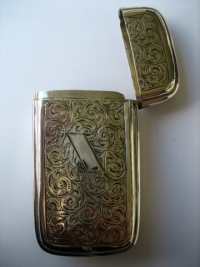
Robert Massart presents:
|
Mail to ASCAS: e-mail silverassociation@yahoo.it
Kelli Rooney writes:
... A couple of years ago, I was lucky enough to find a
wonderful piece of antique glass, a Wedding Bowl that sits in a
beautiful repousse silver 'frame'. I've done some research on
this piece with the help of an acquaintance in France who is
considered an expert on Czech Glass - but I don't know much
about the frame.
The frame has the NOACK mark, as well as the 'three castle' mark
signifying the city of Hamburg, Germany. The castle mark has a
'C' in the gate, which I'm told is the symbol for the assayer of
a particular year/group of years.
Can anyone tell me the year or year span of this assayer? Also -
would this be considered sterling? There are no other marks on
the frame other than the two shown here.
Many thanks for any input on this unusual piece!
Kelli Rooney
according to 'Tardy' the Hamburg mark castle with "C"
refers to 1711 (but I'm perplexed about this dating. The taste
of your piece seems to be 19th century).
I hope to receive further information also about the maker.
Giorgio Busetto
Terry Morgan writes:
... I recently purchased a silver toggle which has the hallmark
shown. Can you help in identifying the hallmarks? It looks like
a £ sign followed by an onion shape followed by 800.
There are crossed ribbon swags around the toggle.
Any help would be greatly appreciated.
Regards and best wishes
Terry Morgan
the mark of your napkin ring is German and belongs to
Lutz & Weiss. You may find information and images in my private
website at
www.silvercollection.it/germansilverhallmark2DUE.html
Giorgio Busetto
Francesca Rapposelli writes:
... recently I had the opportunity to observe a "vase" of which
I'm unable to identify the marks.
I join some photos hoping that someone will be able to identify
its marks.
Regards
Francesca Rapposelli
I believe that your "vase" is a "portable font in pail
form". About its marks, I have only a hypothesis about their
origin:
- mark at the center: its a cross used in Malta (with an outline
or without an outline) from mid 18th century, and inside a
circular outline from 1857 to 1922;
- mark on the right: "open left hand inside a shield": it's the
mark used in Malta from 1798 to 1800 ( Napoleonic invasion) and
from 1801 to 1809 inside a different outline;
- mark on the left: it's hardly readable, but in my opinion it
may be a mark of the Kingdom of Naples (Maltese silver with
Naples marks is often found).
Any further suggestion, addition or correction about these marks
will be greatly appreciated.
Giorgio Busetto
Michael Deshaies writes:
... I just picked up mystery piece with the hallmarks
deliberately grinded off. I have searched the entire piece and
see no other hallmarks.
It is a "huge" bowl at just over 9" wide not including handles
and about 4 inches deep and very thick and solid weight is
"35.5" o.z.
My acid test shows it is a high grade silver probably over 900.
Can you please post this on the next newsletter and can you let
me know what you think.
My friend told me maybe Russian or Islamic, I thought maybe
Mexican.
Thanks again,
Michael Deshaies
it's difficult to reply to your question. I have no idea
about the origin of your piece. (your hypothesis is possibly
right).
I'll publish your question in January Newsletter.
Giorgio Busetto
Luca Mastrodonato writes:
... I recently bought an object of which I'm unable to identify
use and function. It is in made of solid silver but it is
unmarked. I exclude it can be a holy water font and I was
suggested it may be a stirrup(???)
Do you have any idea about its use?
Thanks for your help.
Luca Mastrodonato
it is indeed a silver stirrup. It's typical artifact made
in South America and I saw some other examples in catalogs of
South American Silver Exhibition.
This is the description found on two similar examples exhibited
in "Trois siècles d'orfèvrerie Hispano-Americaine"(Paris, 1986):
Etrier de femme, Rio de la Plata,(?) première moitié du XIX
siècle (Stirrup of Woman, Rio de la Plata (?), first half of the
19th century)
Giorgio Busetto
Penney Cabrera writes:
... I was wondering if you could help me identify a silver
marking. I cannot find this anywhere. Only thing close I found
is from Tiffany with the initials jcm.
I have attached two photos of this bracelet.
Thank you so much!!
Penney Cabrera
the maker is an unidentified silversmith of Mexico
(Guadalajara: eagle 157).
Giorgio Busetto
Paola Continella writes:
... I'm trying to identify the marks of this set of spoons.
Any suggestion would be greatly appreciated.
Paola Continella
the mark with female head is the "head of Ceres toward
left" used in the Regno delle Due Sicilie (Sicily). This mark
was used in the Assay Offices of Catania, Messina, Palermo and
Trapani, from c. 1830 to May 31, 1873.
On the bottom right corner of this mark there is a number (7 or
8) or a letter (E) that I'm unable to identify from your photo.
The mark "JPT" is maker's mark while the other mark should be
assayer's symbol.
Giorgio Busetto
Debbie Bonner writes:
... I need help in identifying a silver plate tray I have that
is 65 years old. I thought it was Georg Jensen, from design, but
it is only marked "MADE IN DENMARK" and below that is a small
whale with an upturned tail.
Thank you,
Debbie Bonner
Your item is undoubtedly of Scandinavian taste but I have
no idea about its mark.
I trust in ASCAS members for the identification of this mark
Giorgio Busetto
Luciano Fiorentini writes:
... I recently bought a pocket watch and I'm researching
information about its marks.
I hope that someone can be of help.
All the best.
Luciano Fiorentini
I'm not well aware on the marking of gold items,
particularly about the use of date letters.
Anyway I can supply this information about the marks of your
watch:
- crown, leopard's head and 18, are London marks for 18 carat
gold. This "crown" was used from 1798 to 1931;
- date letter (I believe to be a gothic "U"): year 1855;
- maker's mark "HG inside an oval": Henry S. Gilling, gold case
maker, mark registered on 6 October 1848.
Henry Slader Gilling is first recorded as a rose engine-turner
from 1839 to 1845 at 41 King Square and then in 1846 and 1847 as
an engine-turner at 2 Upper Charles Street, Northampton Square,
Clerkenwell.
He then went in business with Peter Clerc, trading as Gilling &
Clerc, listed as watch case and dial makers at 1 Upper Charles
Street. The partnership was dissolved in 1848 after which H.S.
Gilling continued as a watch case and dial maker at the same
address. He was succeeded in 1862 by Percy Gilling.
Giorgio Busetto
Nikica Vuletic writes:
... I bought an object that I really don't know what to do with. But there is a serious question in
accordance with this object.
Description: Silver-plate or silver cocktail shaker.
Form: octagonal, 25 cm high, weight 750 gr.
Stile: Art Deco
Hallmarks:
1. Menner Stuttgart - O.K. famous retailer for jewellery, gold, silver etc.
2. Logo containing a fox and letter M that corresponds to Menner workshop
3 Crescent and crown hallmark standard German silver hallmark
4. Fineness incused oval form with text A800 - this makes me believe that this is silver plate rather
than solid silver.
In fact question is if a German silver or 'silver' object is hallmarked with Crescent and Crown hallmark
if there is any chance that it is not solid silver. If, let's say, object was Italian and has only A800
sign I would promptly say 'silver-plate' because all forums and reference books say A800, Arg800, EP800
etc - no chance to be solid silver.
I hope you understood my doubt regarding this.
Moreover the shaker is made from three separate parts. Only the biggest is hallmarked. Is it normal for German silver objects that some
smaller pats of a multipart object are not marked at all?
Yours or your member’s answers are welcome even if not positive.
Best regards
Nikica
Italian items marked ARG800 or similar aren't accompanied by official maker's identification
mark (number and province code). Your item bears official German marks of silver (crescent and crown).
Any suggestion about the meaning of A800 mark
will be welcome.
Giorgio Busetto
"A PAGE per MONTH"
In this column we present a page
obtained from makers' brochures, books, auction catalogs,
advertising or whatever other printed paper related to silver,
which may be of interest for ASCAS members.
The images will be published at a "low resolution" level and for
private and personal use only
This month ASCAS presents an ancient advertising of WALKER &
HALL
Electro Works N° 11 Howard Street SHEFFIELD
"A WORD per MONTH"
In this column we presents an abstract
from a page of the "What is? Silver Dictionary"
courtesy of
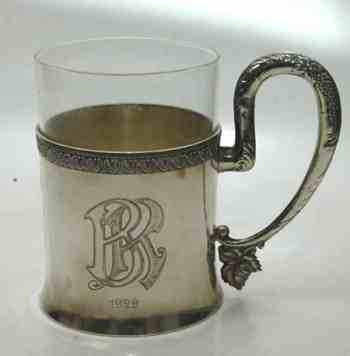
|
PODSTAKANNIK
|
"A BOOK ON MY SHELF"
In this column we present books, new
or ancient, dealing with silver in all its aspects (history,
marks, oddities...). This isn't a "book review" but only a fair
presentation of some useful "tools" that anyone may have in the
shelf of his bookcase.
ASCAS members are invited to contribute to this column
(click to enlarge images)
The "book on the shelf" of this month presents:
Guide To
RUSSIAN SILVER
HALLMARKS
by Paul L. Paulson
Printed in The United States of America
First Edition
1976
RUSSIAN SILVER
HALLMARKS
by Paul L. Paulson
Printed in The United States of America
First Edition
1976
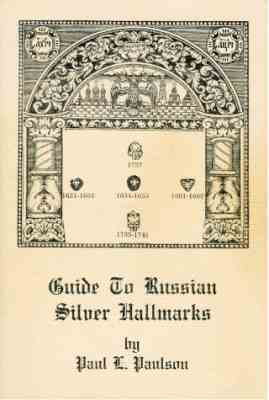 |
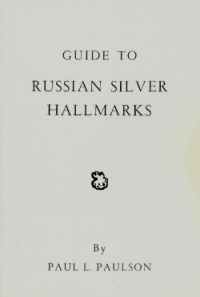 |
Closing our JANUARY 2009 edition of ASCAS Newsletter I hope you have appreciated its content.
Your comments, suggestions and advice will be of great help.
My thanks to Debbie Bonner, Penney Cabrera, Jane Carroll, Paola Continella, Michael Deshaies, Jayne Dye, Rod Elser, Luciano Fiorentini, Christophe Ginter, Robert Massart, Luca Mastrodonato, Terry Morgan, Francesca Rapposelli, Kelli Rooney, JoAnne Wilkinson, for their invaluable contributions.
Giorgio Busetto
Secretary
ASCAS is a community of people having a common
interest in antique silver.
|

